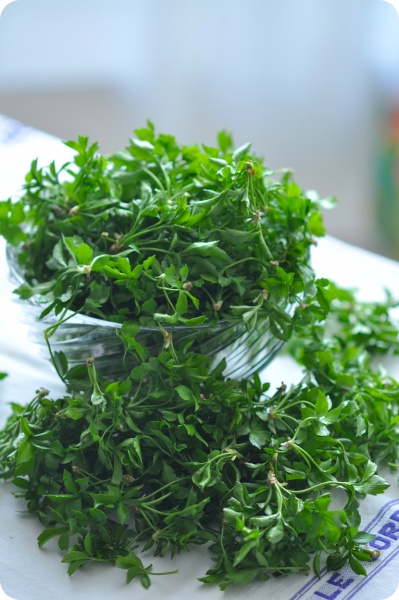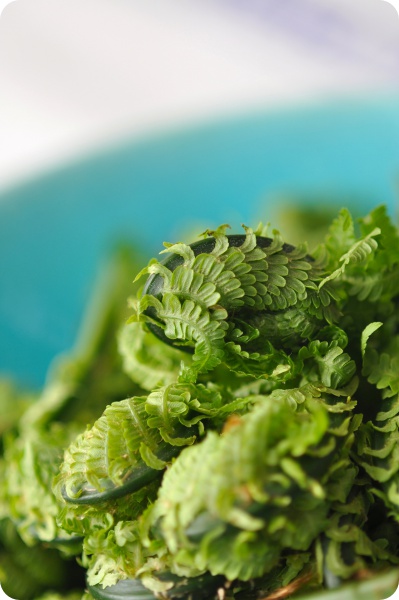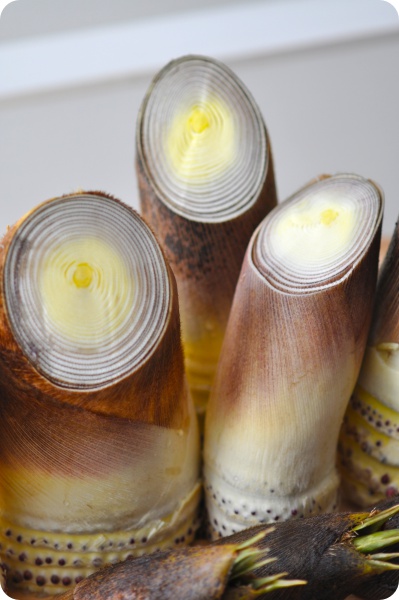After a long cold winter comes spring and it’s fruit to loom. Flowers blossom and wild plants start to emerge from hibernation.
SANSAI – edible wild plants are symbolic signs of spring for the Japanese, embedded deep in our DNA telling us ‘spring is here!’, a turnover to a new season.
These natural grown – SANSAI are from my dearest small sister who lives in the countryside at the foot of the Japanese Southern Alps, gifted with wild plants around her garden – more so an enormous mountainous garden.
田舎で暮らす我妹からの春のお便りです。
東京より一ヶ月ばかり遅く、春の到来。
裏山で山菜や竹の子を収穫して頂きました。
毎年これが届くのを首を長くして待っていて、気がつくと一緒に掘ったのは『アッ!』という間に数年たっています。特に今年はまだ主人の療養期間なので山の斜面を長靴と桑でという分けにはいかず、、来年は是非是非行きたいなぁ〜と思うのです。
アルプスの麓で取れた山菜は綺麗な空気を大自然の恵み。
大切に丁寧にお料理をして食べます。
Bamboo shoots, shamrock like okogi, kogomi-the curled fern heads, warabi-the actual ferns and naturally grown shitake mushrooms.
おこぎ
こごみ(これは最近東京でも見かけますね)
わらび(妹が丁寧に灰アク抜き、束ねておくってくれました)
ワラビの穂先は『地元では目が悪くなる』と信じられていて、穂先の(カールした)芽を摘むのが風習だそうです。
Boiling the ‘Bamboo Shoots’
The NUKA(rice bran) is used to extract the froth from the ‘Bamboo Shoot’ when boiling. Peeling bamboo shoots are like peeling onions, never know where to stop….but I would peel off the coarse and hard skin and chop off the head before it goes into the boiling pan for over (less than) one hour. Without draining the boiling water, let it cool and retain the bamboo shoots in the boiling water as it preserves longer in this boiling water.
竹の子はぬかを使って1時間弱、茹でます。
Shamrock like ‘Okogi’
This SANSAI is quite unknown and rarely seen in Tokyo farmers markets so I can only go by the information which my sister has given me. The taste is not so pronounced, more so the food texture comes to mind. Boiling this Okogi in hot water for a split of second and place it in cold water to instantly cool. A sprinkle of light soy sauce or soy sauce dashi goes well.
(Soy Sauce Dashi is a soup in the ratio of 10:1:1 – Dashi : Soy Sauce: Mirin)
The same cooking style would apply to ‘KOGOMI’- the fern head.
‘Sansai Maze Gohan’
Maze (Mixed) Gohan (Rice) is a popular style of rice which is easy to make – if you have an automatic rice cooker. Using the fresh SANSAI I’ve made a ‘Clam and Sansai Maze Gohan’. I will jot down the recipe below.
山菜まぜご飯をつくりました。餅米を少々入れて、今回は炊飯器で。せっかくの山菜や具材の味はなるべく残す様に努力してみました。
Sansai Maze Gohan Recipe –
Rice Ingredients
- 1/2 cup mochi gome (sticky rice)
- 2 + 1/2 cup rice
- 3 cups dashi broth
- 1 teaspoon of salt
- 1 teaspoon of sake
Sansai Ingredients (Note : These are all approximate volumes. Increase or decrease according to your taste.
- 1/2 cup of Clams (peeled)
- 1 cup of thin sliced bamboo shoots
- 1/2 cup of boiled okogi
- 1/2 cup of boiled kogomi
- 1 teaspoon salt + 1 teaspoon of soy sauce
- Soak the mochi gome (sticky rice) in water for about 1 hour before use.
- Wash the rice and drain to dry before use.
- Preparing the clams – Clams should be soaked in about 70% of salty water so it will spit the sand before cooking use. Place the clams in a pan and sprinkle sake to leave some pool of sake at the bottom. Cook in high heat until the clams start to totally open their mouth. Cook for about 5 minutes and turn the heat off for good clam extract.
- Preparing the sansai – Thinly slice the bamboo shoots and boil in a soy sauce dashi to add a very light taste to the bamboo before use. Quickly boil the okogi and kogomi.
- Place the rice, stick rice and dashi broth into the rice cooker and add the clams, bamboo shoots, okogi and kogomi after the rice is cooked.
- You can certainly add the 5. Ingredients at stage 4, but I personally dislike soggy and over-cooked vegetables.
Sansai Maze Gohan Recipe | 山菜まぜご飯
Rice Ingredients
- 餅米・・・・・・・・・・1/2 カップ
- 米・・・・・・・・・・・2 + 1/2 カップ
- 昆布と鰹の一番だし・・・3 カップ弱
- 塩・・・・・・・・小匙1
- 酒・・・・・・・・小匙1
The Sansai Ingredients
- 剥きあさり・・・・・・・・1/2 カップ
- 竹の子(薄切り)・・・・・・1/2 カップ
- こごみ・・・・・・・・1/2 カップ
- おこぎ・・・・・・・・1/2 カップ
- 塩・・・・・・・・小匙1
- 醤油・・・・・・・・小匙1
お浸しの出汁の比 (10:1:1この割合が基準)
- 出し汁・・500cc(昆布と鰹の一番出汁)
- 醤油・・50cc
- 味醂・・50cc
①もち米は1時間ばかり水につけてから使用する。
②お米は一度洗い、ざるにあげておく。
③あさりは塩水につけて、砂をはかせます。あさりを鍋に入れ、お酒をふりかけて酒蒸しにします。あさりの口がバカパカと開いて、いいエキスが出始めたら火を止めておきます。冷めた時点であさりの身を取り出し、あさりのエキスは別の用途の使用に保存しておくか、、混ぜご飯の出汁に混ぜてもいい味がでます。
④竹の子は薄く切り、出汁と醤油とお塩少々で味をつけておいます。
⑤おこぎとこごみはお浸しの要領で熱湯にさっと通して、冷水で冷ましておきます。
⑥素材の味がそれぞれ残る様に、、、炊飯器でお米をまず炊いて(お米、もちごめ、出汁、塩、酒)炊きあがる寸前か保温になってから具材(あさり、竹の子、こごみ、おこぎ)を混ぜ合わせます。


















